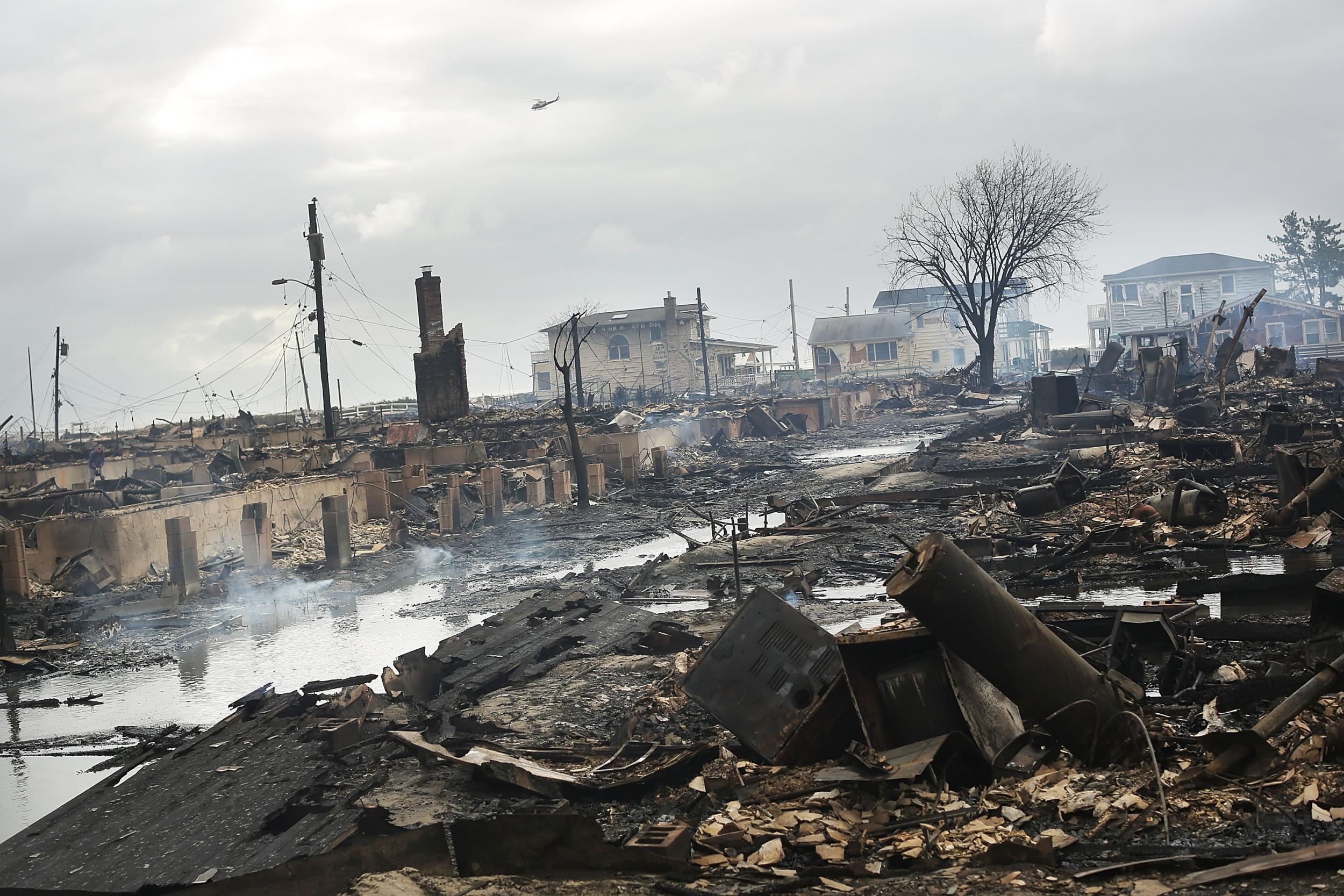Devastating floods from worst Atlantic hurricanes set to become up to 17 times more likely, study suggests
'To effectively prepare for future hurricanes, we need to know what coastal cities will be facing in the coming decades'

Devastating floods caused by the most ferocious Atlantic hurricanes are expected to become up to 17 times more likely by the end of the century, according to new research designed to help protect cities from being swamped.
Academics in the US created a computer simulation to try to predict how often New York City would experience flooding on a scale last seen when Hurricane Sandy hit the country’s east coast, causing $71bn (£57bn) in damages and killing 157 people.
The storm pushed a wall of water in front of it, causing the East River to break its banks, flooding streets and subway tunnels in Lower Manhattan in 2012.
To defend against future hurricanes, the US Government plans to build a massive berm and walled park to protect low-lying parts of the city.
The researchers, from Princeton and Rutgers universities and the Woods Hole Oceanographic Institution, estimated the predicted rise in sea level by 2100 – caused by rising global temperatures – would make such ‘surge floods’ about 4.4 times more frequent than in 2000.
And factoring in other changes to the climate – such as warmer sea water – they found such disasters could be at least three times more common, but possibly up to 17 times.
Professor Ning Lin, a Princeton University engineer who specialises in analysing the risk of natural hazards, said: “To effectively prepare for future hurricanes, we need to know what coastal cities will be facing in the coming decades, but past models have not accounted for all of the significant dynamic factors involved in predicting surge floods.
“Your mitigation measures are only as good as your predictions of the threat you're trying to mitigate.
“Engineering-wise we’ve always considered sea level and climate as static, but now we need to account for the change over time.
“If you don't account for rising sea level and possible change in storm activity, you’re underestimating future flood risk.”
Professor Lin admitted there was “a large amount of uncertainty about the extent of the increase” over the coming century.
But she added: “What this tells us is that large surge floods are likely to increase in frequency.
“As we refine climate and hurricane dynamic models, we will have more accurate predictions that will allow planners to better design flood mitigation strategies.”
The researchers also used the model to look back in time, estimating that the frequency of storms producing surge floods on the scale of Sandy had increased by three times between 1800 to 2000.
Rick Luettich, a professor of marine sciences and environmental sciences and engineering at the University of North Carolina, said: “One wonders whether this area would have developed into the megacity it is today had its early years occurred under the storm surge conditions predicted for 2100.”
Join our commenting forum
Join thought-provoking conversations, follow other Independent readers and see their replies
Comments